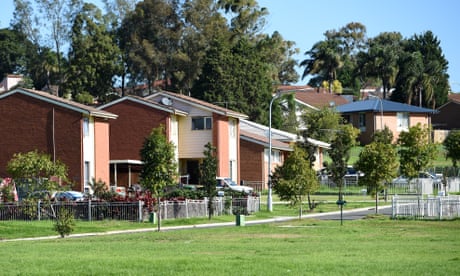- by foxnews
- 08 Apr 2025
Thinking big helped Australia solve a housing crisis in the 1940s. We can do it again | Ellen Fanning
Thinking big helped Australia solve a housing crisis in the 1940s. We can do it again | Ellen Fanning
- by theguardian
- 24 Apr 2022
- in news

On 14 March 1977, a Rolls-Royce carrying the Queen and the Duke of Edinburgh swept through the working-class Sydney suburb of Waterloo to visit a new inner-city high-rise housing commission development.
The 1980s brought the beginnings of a shameful decline in the availability and quality of public housing for the poorest Australians. Between about 1950 and 1970, the New South Wales public housing commission built about a sixth of all houses in the state and then sold a third of everything they built to the tenants, helping to fuel rising rates of home ownership in the postwar period.
But these days, the elderly pensioner the Queen met in 1977, who paid $8.80 a week for a single housing commission unit, would struggle to afford to rent in the private market. While pensioners might well be entitled to commonwealth rent assistance, which increases in line with official inflation, over the past two decades the real increases in actual rents in Australia far outstrip the CPI.
And the situation is only getting worse. Despite a public housing building boom in many states and territories, so many derelict properties need to be destroyed that the $10bn being spent to build 23,000 dwellings over the next three years will only end up adding about 15,500 dwellings to the available pool of public housing.
But of course, there are two housing crises in Australia. The other is housing affordability.
Middle class Australians grasping for the great Australian dream of home ownership now spend up to a decade saving to raise a deposit while they too compete for private rental housing.
Scott Morrison has told these renters that the best way the government can support them is to help them buy a home.
But what if the best solution for them was not to buy a house?
And what if by encouraging these people not to buy a house, we could solve both our national housing crises at the same time?
Economic modelling by EY Sweeney challenges the notion that renting is dead money. Their research compares the fortunes of two Sydney home seekers with the same starting capital, in any one of 43 local government areas in Sydney between 1994 and 2017. One invests in a house or unit. The other rents and invests instead in an ASX200 index fund, pouring all the additional money they would otherwise have spent on a mortgage, utility and maintenance costs into that fund. Ten years on, the result? 62% of the time the renters were better off than home owners living in the same area.
Thinking big is something Australia used to do.
- by foxnews
- descember 09, 2016
Ancient settlement reveals remains of 1,800-year-old dog, baffling experts: 'Preserved quite well'
Archaeologists have recently unearthed the remarkably well-preserved remains of a dog from ancient Rome, shedding light on the widespread practice of ritual sacrifice in antiquity.
read more


